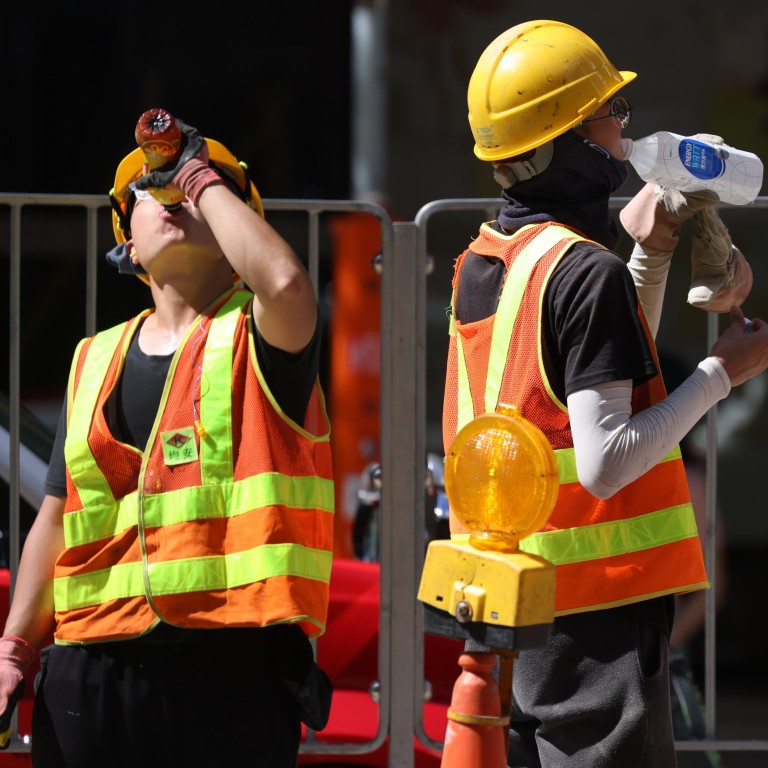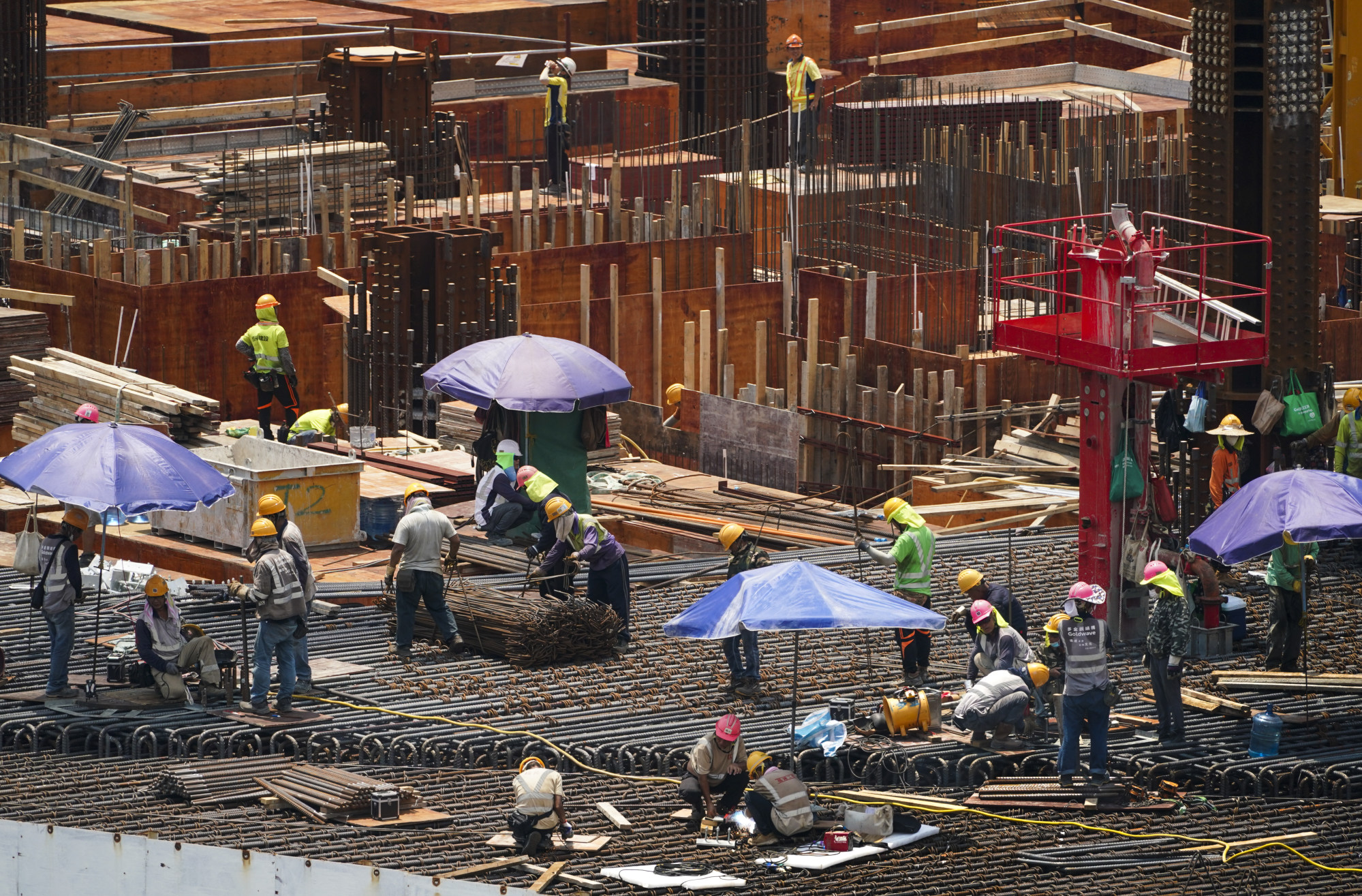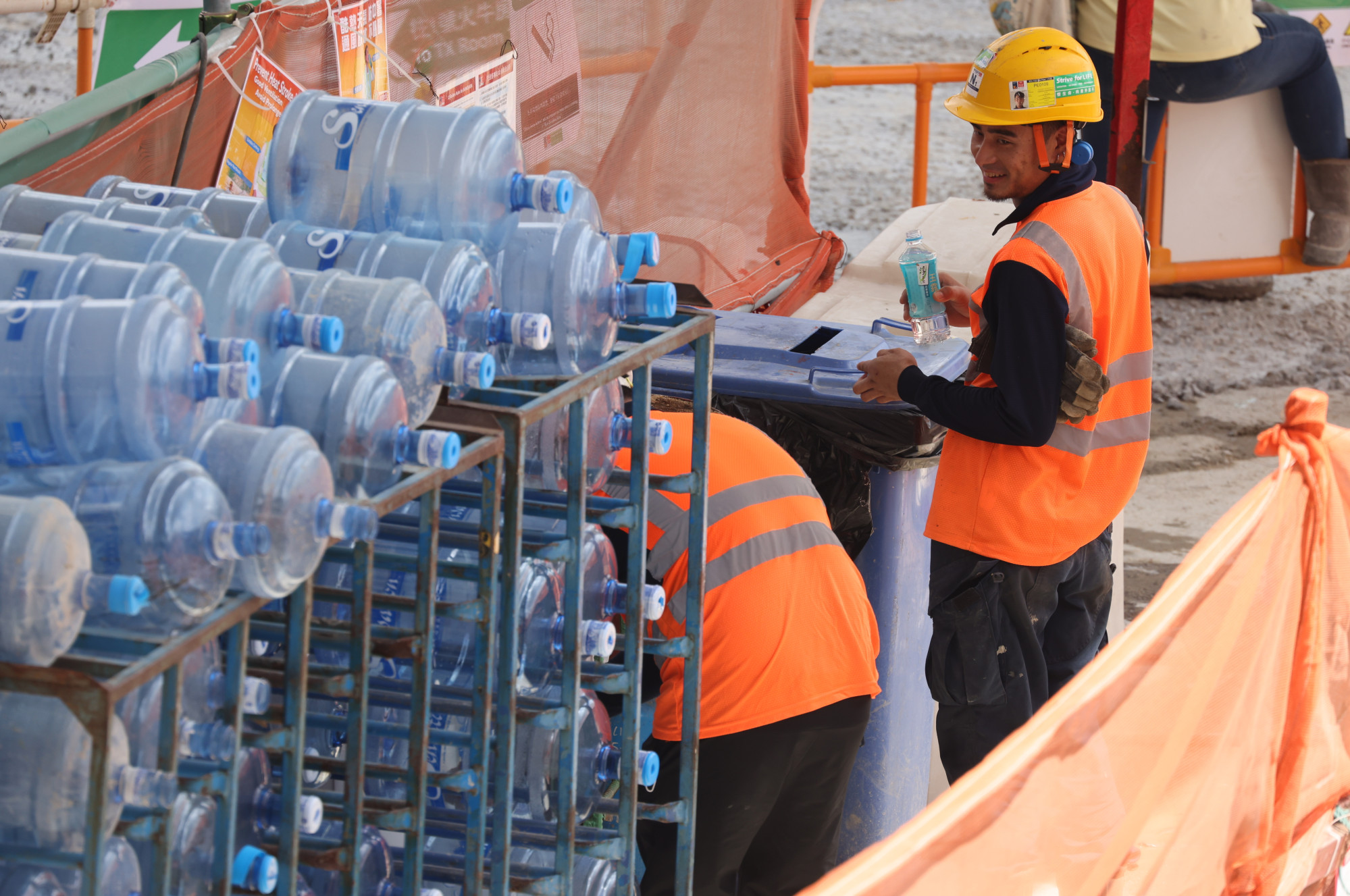
Hong Kong bosses not warm on new alert system protecting workers from heatstroke, say guidelines ‘hard to implement’
- Industry representatives point to work processes at construction sites, arguing halting one job type could affect production lines
- Labour unionist also says threshold for rest too high, given there have not been many heat index marks yearly that would trigger new alerts
The three-tier guidelines, announced on Monday and set to take effect next week, will advise employers on when staff should rest according to their job nature when temperatures soar.
“There will be great difficulties in actual execution. Workers at construction sites range from a few hundred to a few thousand with different duties. It’s hard for a foreman to comprehend everything,” Hong Kong Construction Association executive director Godfrey Leung King-kwok told a radio show, arguing operations would become “very confusing”.

Leung added that halting one work type could lead to delays down the production line as procedures were related.
He also lamented the industry having only a week to prepare for the “complicated” system, while the sector was still considering ways to implement the guidelines.
From May 15, the Guidance Notes on Prevention of Heat Stress At Work will provide a three-tier warning based on the Hong Kong Heat Index, which was co-developed by the Observatory and Chinese University by calculating the relative humidity, intensity of sunlight and temperature recorded at the forecaster’s Tsim Sha Tsui station.
When the index hits 30, an amber warning will apply, with an upgrade to red or black when the mark reaches 32 or 34, respectively. Workers will be advised to suspend their duties or rest for periods of 15 to 45 minutes based on their categorised level of labour intensity.
Hong Kong marks 22 hot nights in July, most since records began in 1884
Scaffolders and bar-benders involved in “very heavy” labour are advised to rest during black or red warnings, while porters and concreters classified as involved in “heavy” labour can only rest under the black warning and can take a 45-minute break for every 15 minutes of work with red alerts in place.
A safety officer with China State Construction Engineering Hong Kong, who only gave his surname as Chu, said he received an email from the Hong Kong Occupational Safety and Health Association about the new system on Monday night.
But he expressed concerns that the guidelines would be difficult to implement at construction sites.
“There are too many types of jobs at one construction site. It will be impossible to promptly notify and make sure all workers with very heavy or moderate labour duties stop working or to rest after the index hits a certain level,” Chu said.
“My main concern is that workers will still be carrying on even if they are recommended to stop working as many of them are paid on a daily basis. They may still risk themselves under the heat in order to get paid.”

Asked if the guidelines would be difficult to execute, Deputy Commissioner for Labour Vincent Fung Hao-yin, who spoke on the same radio show on Tuesday, advised bosses to conduct prior assessments and discuss arrangements with employees.
“They should know best about workers involved in different duties and the working environment,” Fung said.
Despite the new system being non-legally binding, Fung said the government could still take action under general terms in the Occupational Safety and Health Ordinance.
The law stipulates employers must provide or maintain work systems that are safe and without health risks as far as reasonably practicable. Those failing to comply face a fine of up to HK$10 million (US$1.3 million) and two years of imprisonment.
Hongkongers in subdivided flats, rooftop huts bear brunt of heatwave
The Hong Kong Property Services Alliance, which mainly covers cleaners and security guards, said management planned to brief staff before work and after lunch breaks when the new guidelines kicked in next week.
“If there is a warning before work, we will ask them to take breaks on their own,” alliance chairman Mickey Yan Wai-kiu said on the same radio programme. “If the warning is announced in the middle of work, we will call staff if needed but it is troublesome as a company can have a few hundred contract workers.”
He voiced hope the government could give early warnings to facilitate the arrangements.
Unionist Lam Chun-sing said the work-break threshold was too high, given the city never experienced days corresponding to a black warning and had fewer than 10 days qualifying for the red alert since 2014.
Hong Kong swelters as mercury hits 35.6 degrees, second hottest July day on record
Lam, also a speaker on the show, expressed concern over whether employers would take advantage of the system, such as cutting rest time for workers if they had installed extra measures such as providing shelter or improved ventilation.
“I’m worried that employers will do it casually … It seems workers can hardly benefit,” Lam said, urging the Labour Department to conduct inspections to ensure the guidelines were properly implemented.
Denny To Chun-ho, a former trade unionist who specialises in labour rights, said the new guidelines were too loose and it would be difficult for authorities to monitor how well they were implemented.
“The work-break threshold is set, but no one will know how much rest workers take except themselves and their employers. My concern is that workers may be asked to work extra to compensate for the rest time,” he explained.
“Clear legislation is the ultimate way to protect employees from both heatstroke and the risk of being exploited. Details of reasonable compensation for heatstroke workers should also be stated.”


